Are you getting ready to start 2-Digit Addition in 1st grade? I absolutely LOVE teaching my 1st graders to add 2-digit numbers! It is amazing to see the confidence they have when working with these bigger numbers and the growth from the beginning of the year. In this post I’m sharing everything you need to know about planning a successful 2-digit addition with and without regrouping unit in 1st grade. Find tips, strategies, and ideas to have your 1st graders easily adding within 100! Plus grab a 2-digit addition FREEBIE to use in your classroom!
If you’re new here, I’m Kelsey and I LOVE helping 1st grade teachers set up a successful guided math schedule in their classrooms! You can read more about Guided Math here!
You can find all of the lessons, activities, worksheets, and anchor charts from this post in my 2-Digit Addition and Subtraction Math Unit here! It is part of my Happy Math Curriculum for 1st Grade!

Before you start, do this first!
In order for students to be successful when adding 2-digit numbers, it is absolutely essential that they have strong place value understanding! We spend weeks before beginning our 2-digit add and subtract unit working on developing place value skills.
Students need to understand:
- ⭐️ 2-Digit numbers are made up of groups of tens and extra ones
- ⭐️ 10 is a bundle of tens ones
- ⭐️ Each digit of a 2-digit number represents the amount of tens and ones in the number
- ⭐️ 4 tens is the same as 40, 5 tens is the same as 50, etc.
Building these understandings through explicit instruction + hands-on learning will make teaching students to add and subtract with 2-digit numbers a breeze! Read more about our place value unit here!
2-Digit Addition Strategies to teach in 1st Grade
Once students have built a strong place value foundation, we are ready to begin adding 2-digit numbers! I like teaching my students a variety of strategies for adding within 100! I tell student that strategy is a different super power. Whenever we need to add 2-digit numbers, we can pull out one of our strategy super powers to help us!

After teaching each strategy, we add a strategy poster to our math wall!
I also like to give students a strategy sheet to keep in their math folders for easy reference! You can grab this printable chart for free here!

Introducing 2-Digit Addition Strategies
I introduce each of our 2-Digit Addition Strategies during our whole group math mini lesson using our interactive mini lesson slides. Students usually bring a dry erase board to the rug so that they are able to actively participate in the lesson.
During each mini lesson I:
- ⭐️ Introduce the strategy
- ⭐️ Model the strategy
- ⭐️ Give my students an opportunity for quick guided practice
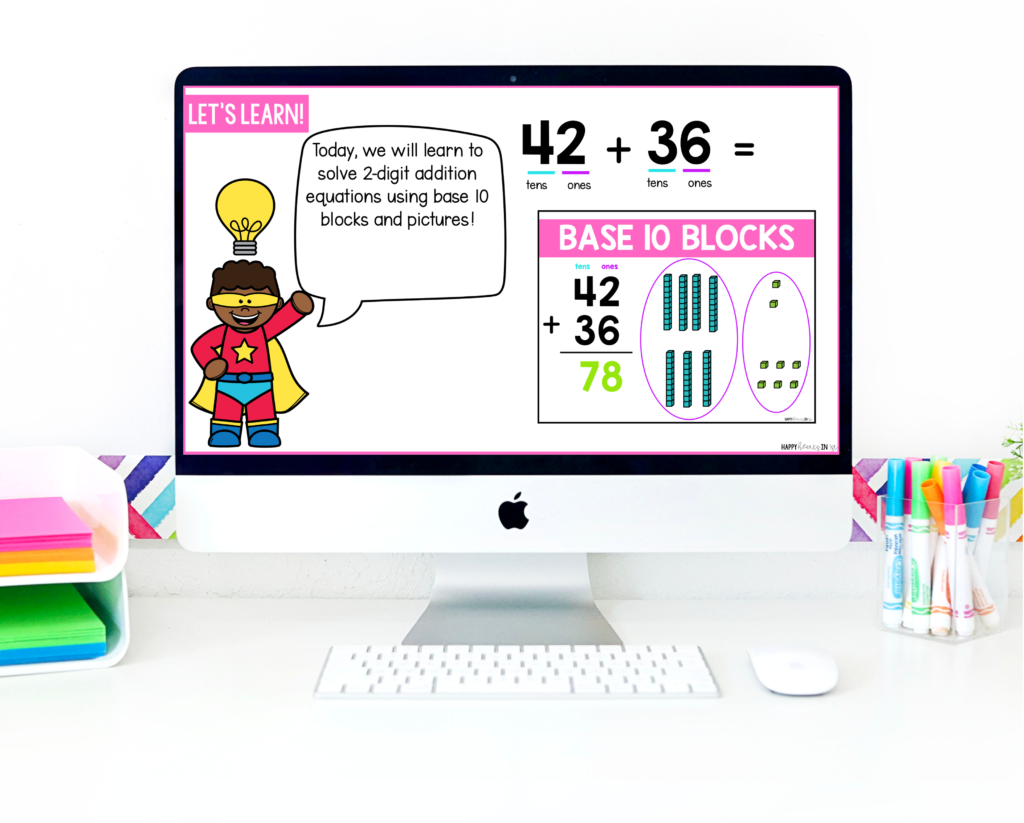
Small Group Hands-On Practice
After each mini lesson, I meet with my students in small groups. During our small group time, we work on adding 2-digit numbers using math mats and manipulatives. This gives students hands-on, guided practice!
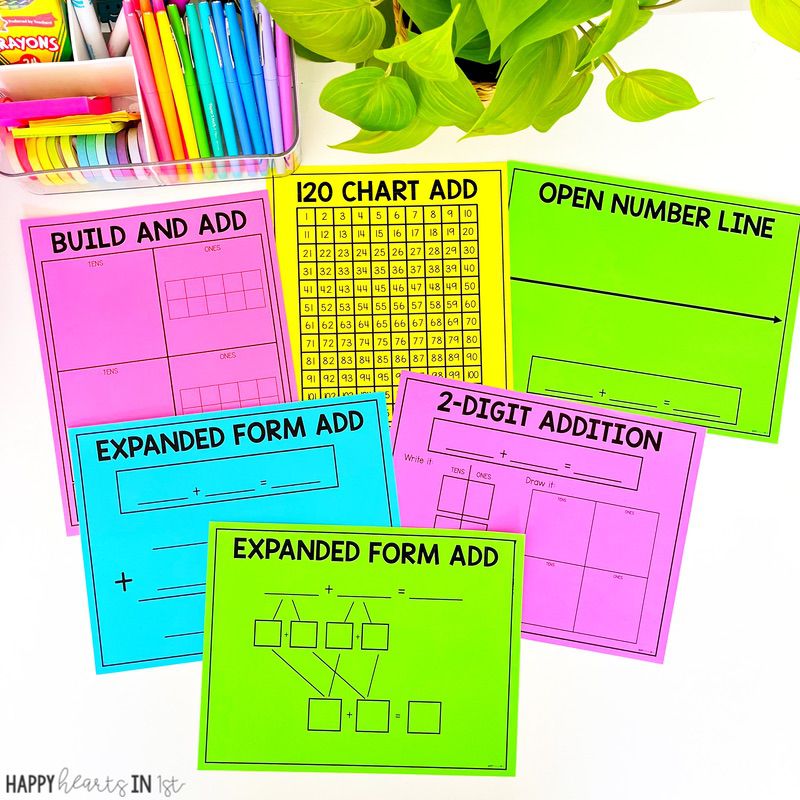
Here are the 2-Digit Addition Strategies we work on in 1st grade!
Base 10 Blocks and Pictures
The first strategy I always teach is using base 10 blocks and pictures. We start by building each addend. Then we join our ones and our tens to find the total. Throughout our unit, I ALWAYS have my students add ones first before tens even before regrouping. This will set them up for success when regrouping is introduced!
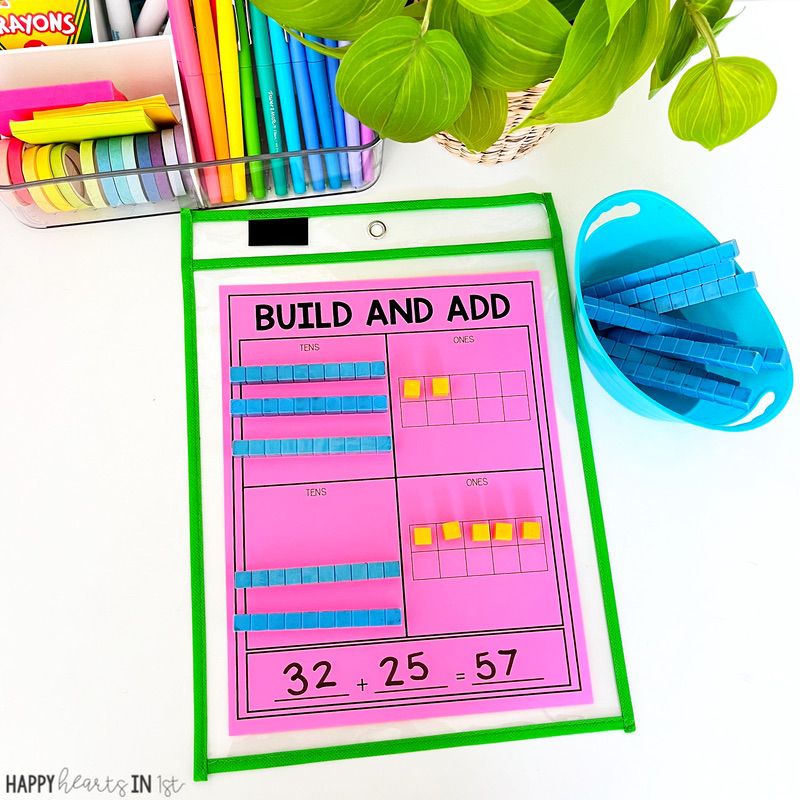
After students are comfortable using the blocks, we work on drawing quick base 10 pictures to find the sum when adding 2-digits!
120 Chart
Our next strategy is using a 120 Chart. At this point in the year, students are already very comfortable using our chart. They have learned to find numbers, skip count, and find 10 more and 10 less. We cover using a 120 Chart during our place value unit and also use it daily as a math warmup.
When adding 2-digit numbers on a 120 Chart, Find the biggest addend on your chart. Jump DOWN to add your tens. Hop to the right to add your ones.
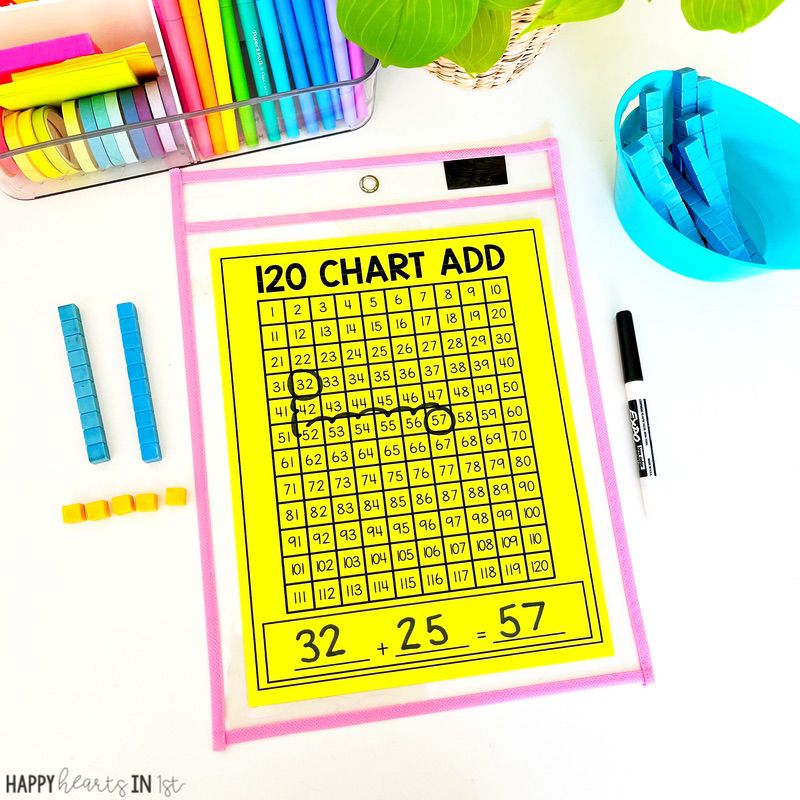
Open Number Line
Next, students learn to add 2-digits using an Open Number Line. This strategy can be more challenging for students who need more support when skip counting by tens. I like to introduce this strategy so they are exposed to an open number line before 2nd grade, however I know not all students will master it and that’s okay!
To use an open number line, start with your biggest addend. Make big jumps to add your tens. Make small hops to count on your ones.
TIP: Use base 10 blocks for a hands-on open number line! Students love when they get to write directly on our small group table with dry erase marker!
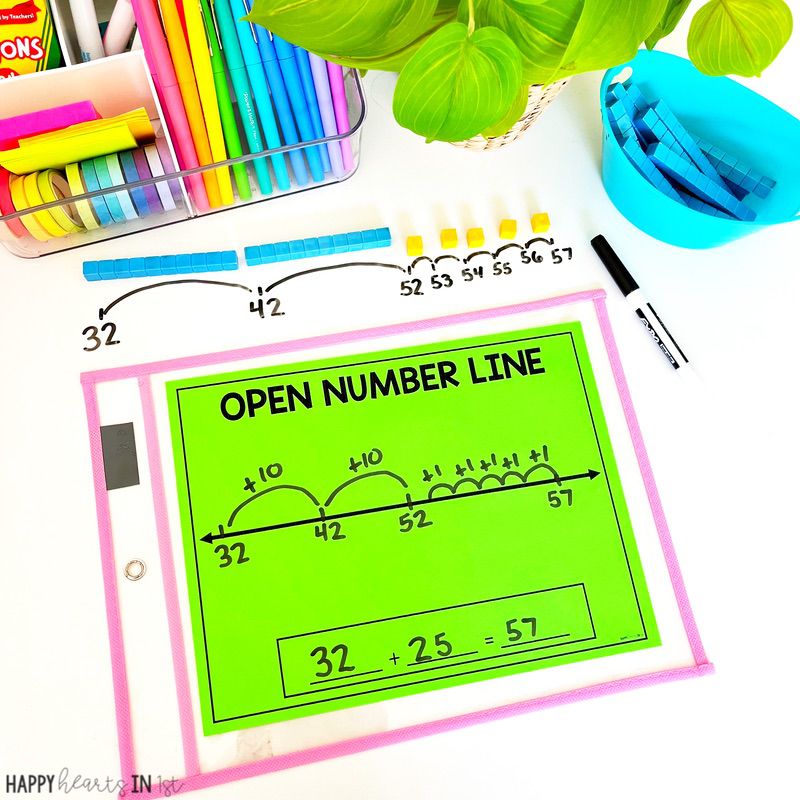
Expanded Form
The next strategy we learn is using Expanded Form to add 2-digit numbers. Write the expanded form of each addend. Add your ones then add your tens!
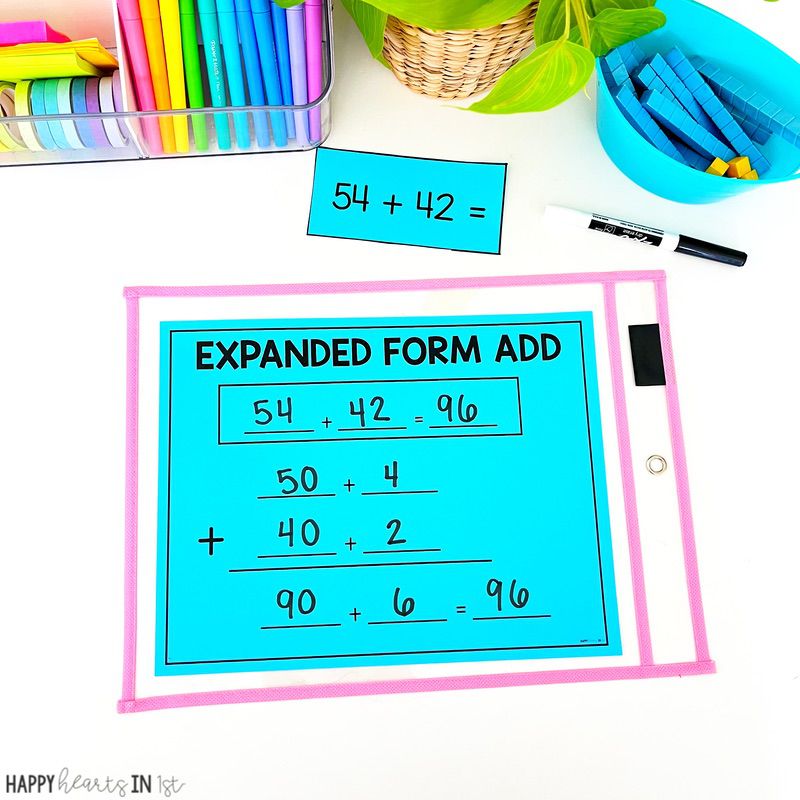
Standard Algorithm to add 2-Digit Numbers
Finally, after students have a good understanding of using place value strategies and hands-on models to add 2-digit numbers. I introduce the standard algorithm. We work on writing our equation vertically, making sure to line up the tens and ones. Then we work on adding down starting with the ones first, then the tens to find the sum!
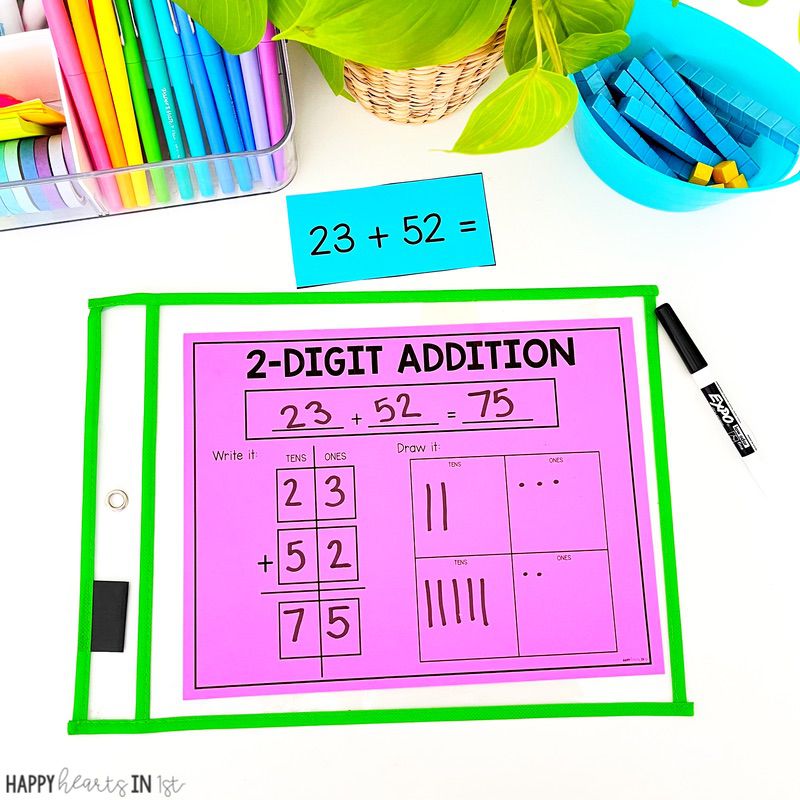
2-Digit Addition with Regrouping
In first grade, the common core standards asks students to Understand that in adding two-digit numbers, one adds tens and tens, ones and ones; and sometimes it is necessary to compose a ten.
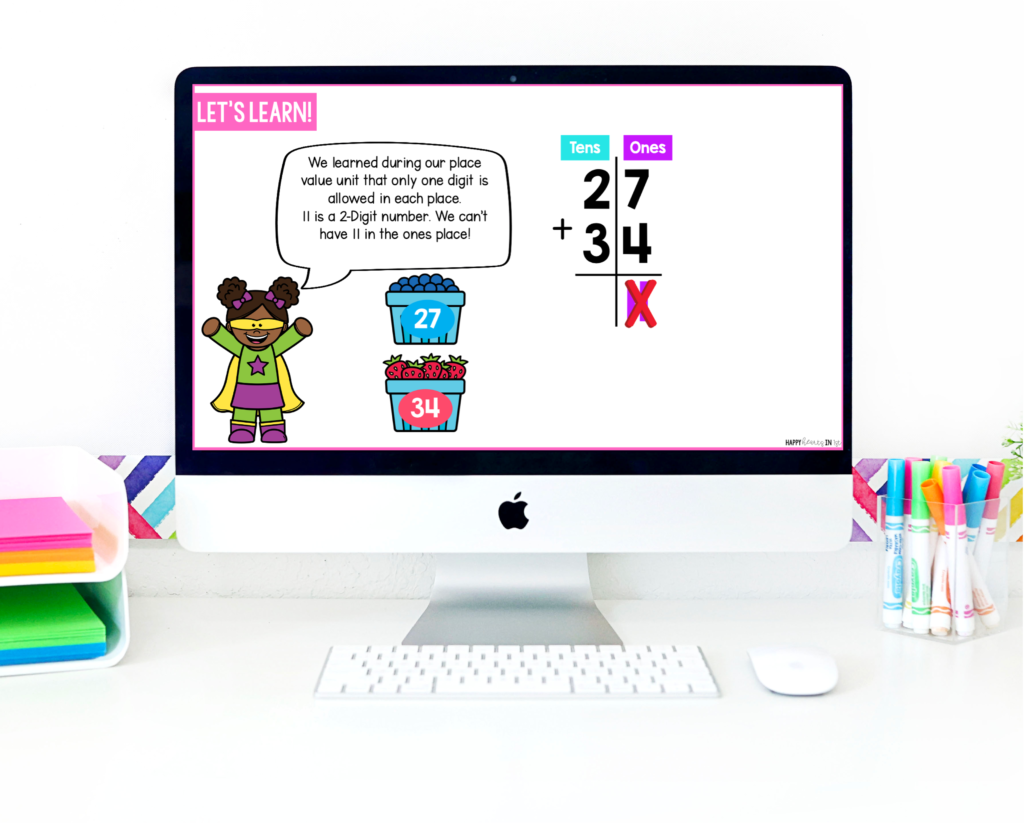
We want our 1st graders to be introduced to regrouping in a concrete and conceptual way. We use base 10 blocks to practice making a 10.
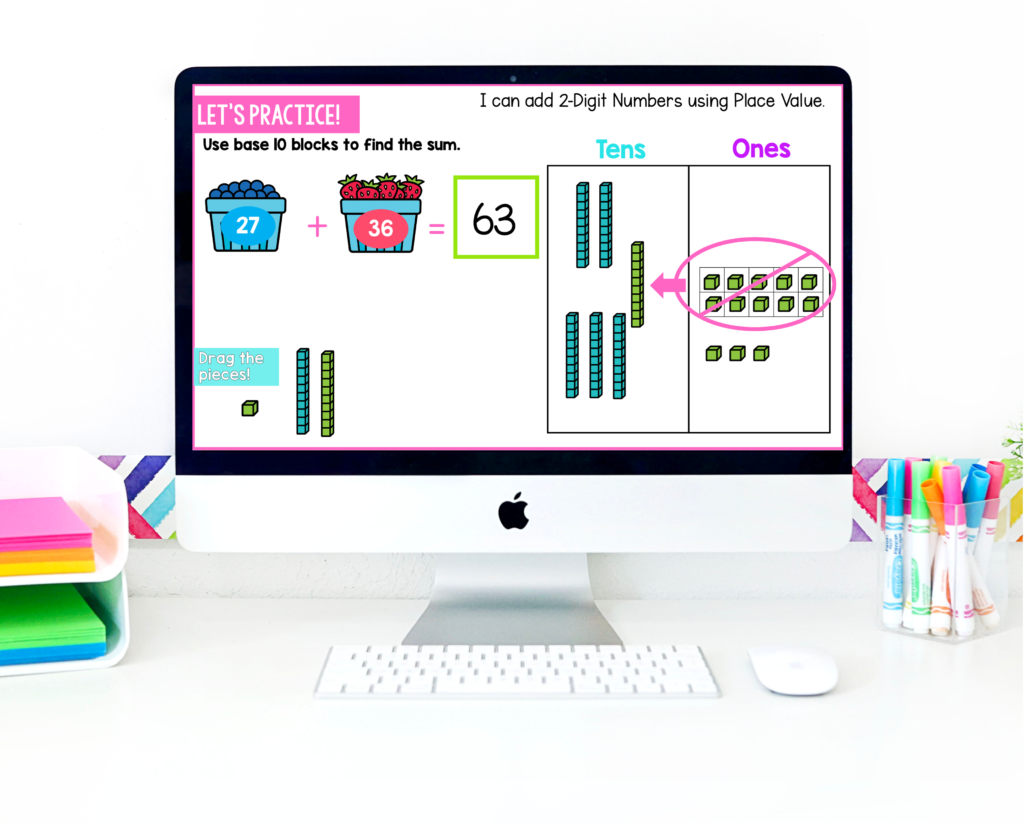
Practice Activities for Double Digit Addition
During our unit, we incorporate tons of hands-on activities and math centers to practice adding 2-digit numbers!
You can grab these Double Stuffed 2-Digit Addition Freebies Here!
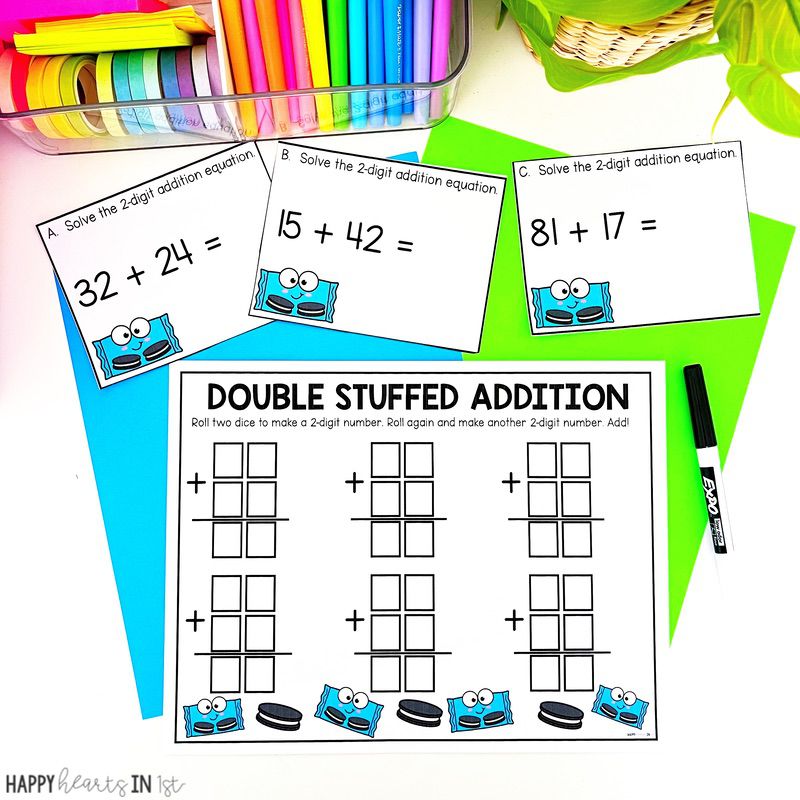
Students keeps track of the strategies we have learned using these 2-digit strategy books!
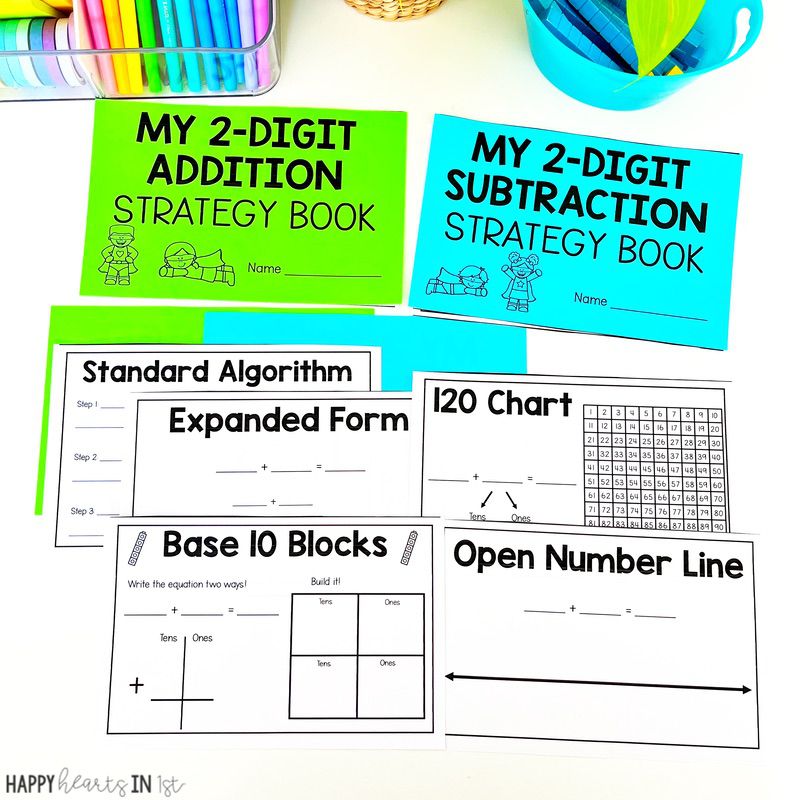
We also practice solving 2-digit addition word problems using our strategies!
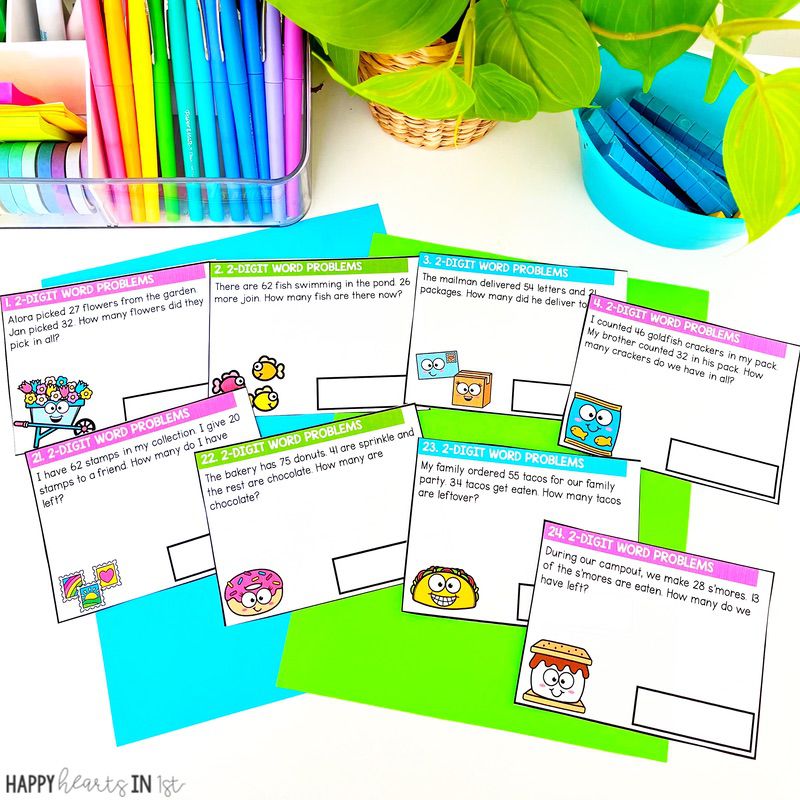
Finally, we celebrate the end of our unit with a craft!
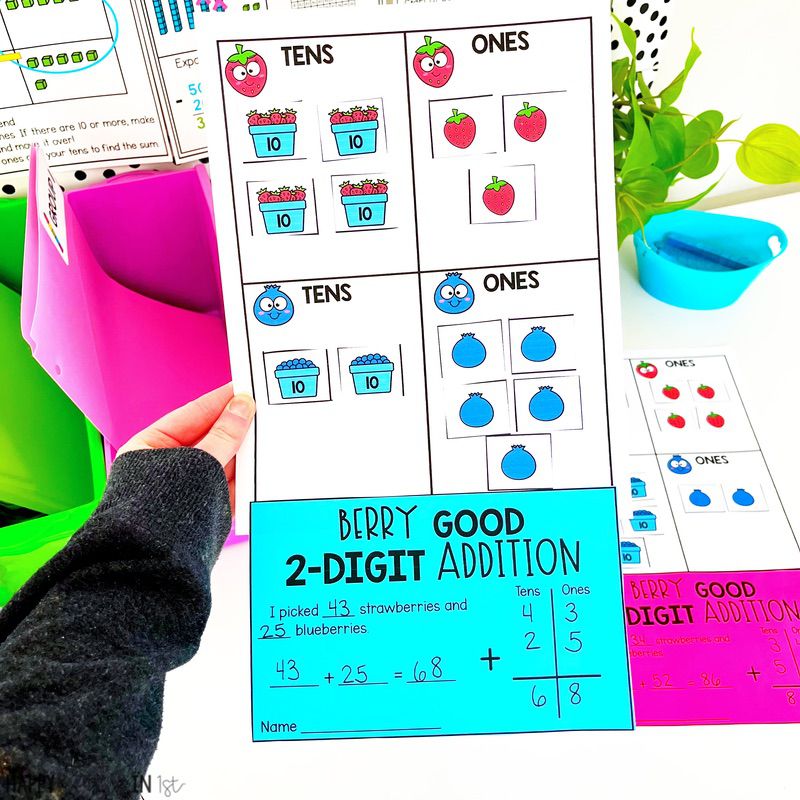
How do I assess when teaching 2-Digit Addition Strategies to first graders?
Assessment is an important part of guided math! It not only tells us if students have mastered concepts at the end of a unit, but it also helps inform teaching decisions during a unit. There are 3 main ways that I assess in my guided math block.

- Exit Slips: Giving quick exit slips at the end of a small group session is perfect for checking students understanding during a math unit.
- Observation: Along with exit slips, I use a lot of observation as a formative assessment. I keep anecdotal notes in my guided math planning binder! You can grab it for free here!
- Brain Check: At the end of a unit, I give a summative assessment over the standards we covered! In the unit, I included two versions of the brain check so that one could be given as a pre-test and one as a post-test.
Want your 2-Digit Addition and Subtraction Unit planned for you?
You can grab this 1000+ page resource that includes:
- ⭐️ Ready-To-Use Mini Lesson Slides (3 weeks of lessons)
- ⭐️ Hands-on Activities to use during small group instruction, whole group, and math centers
- ⭐️ 2-Digit Strategy Posters and Mini Posters
- ⭐️ Worksheets and Independent Practice
- ⭐️ Assessment


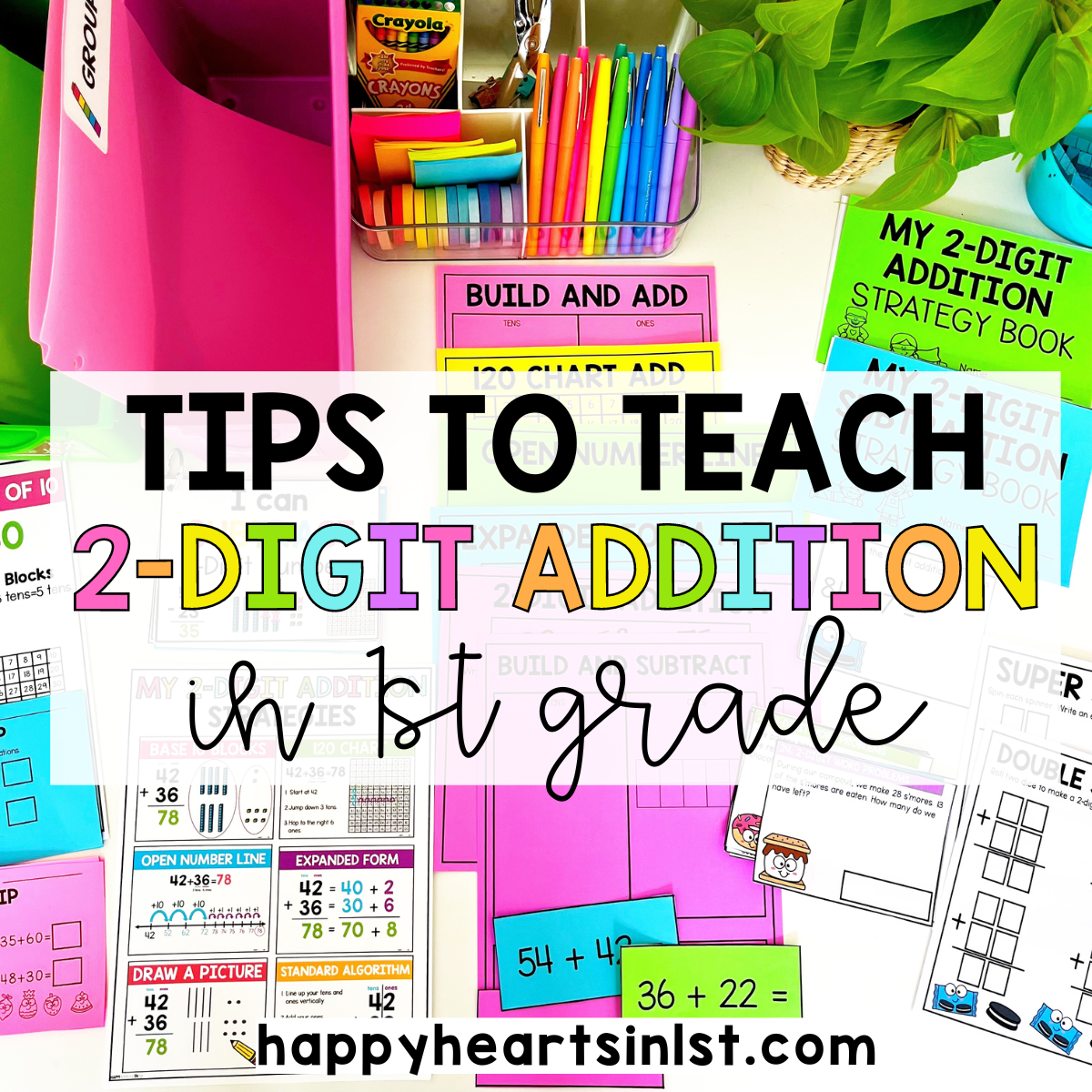
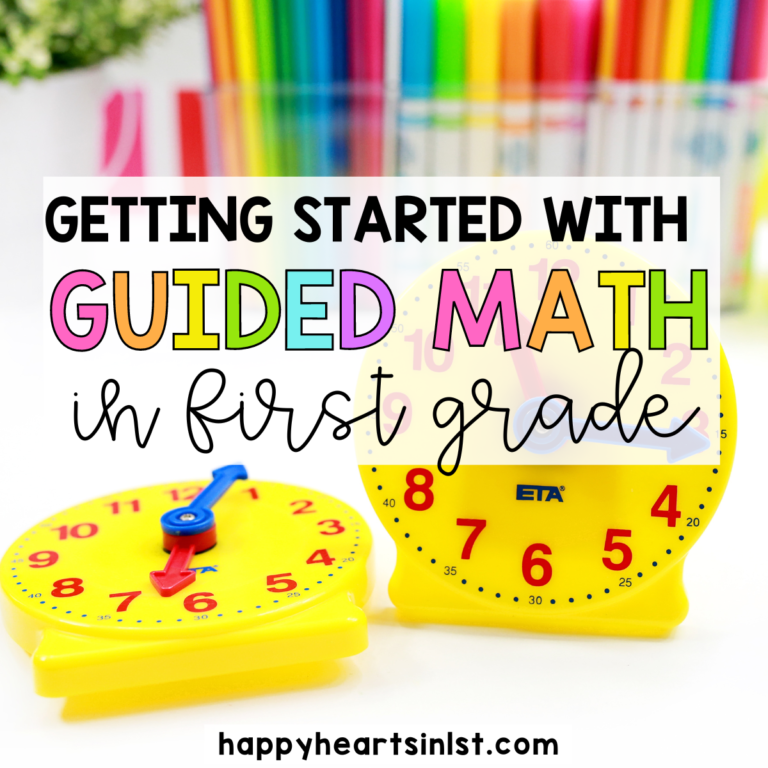

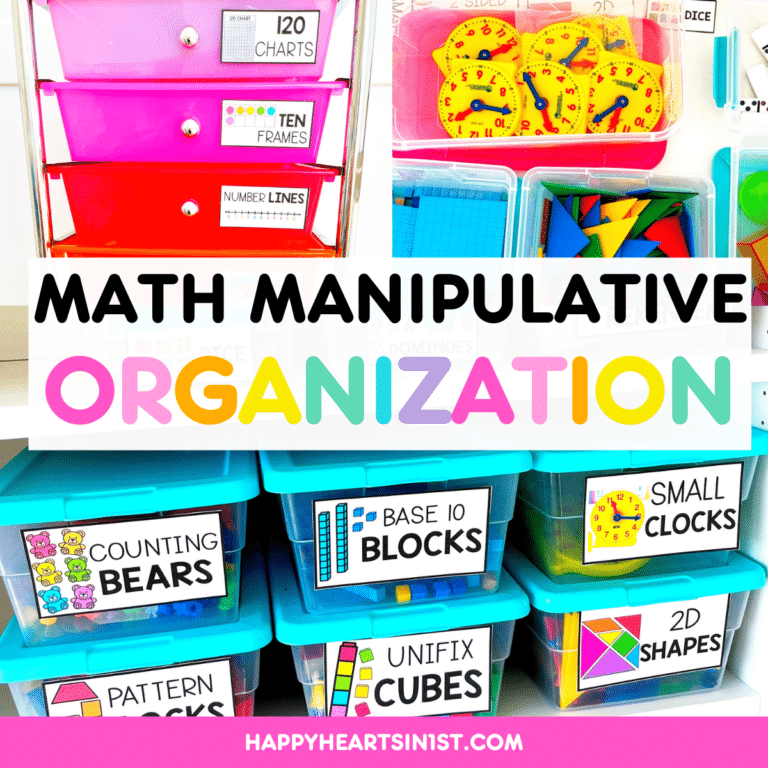
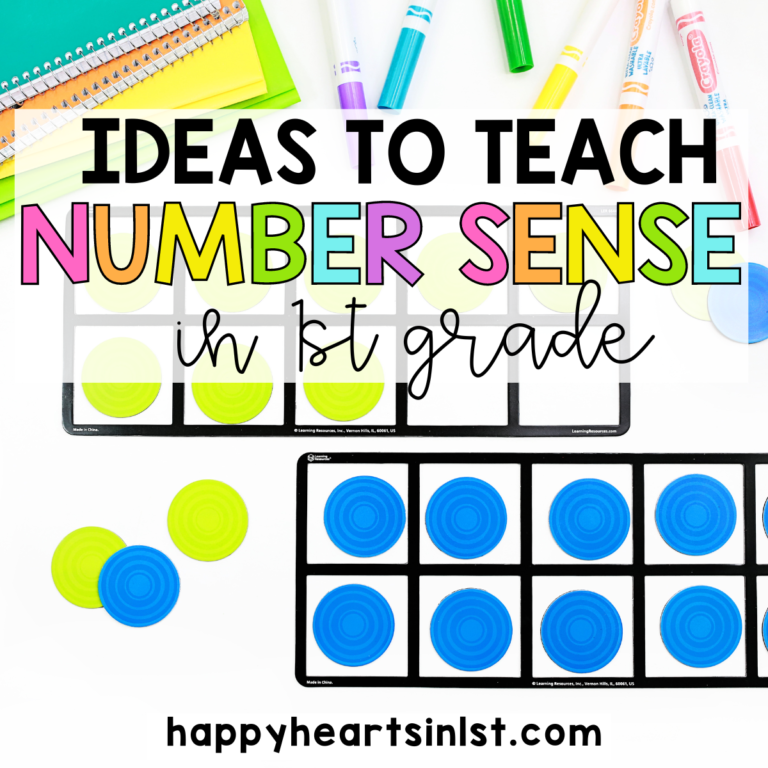
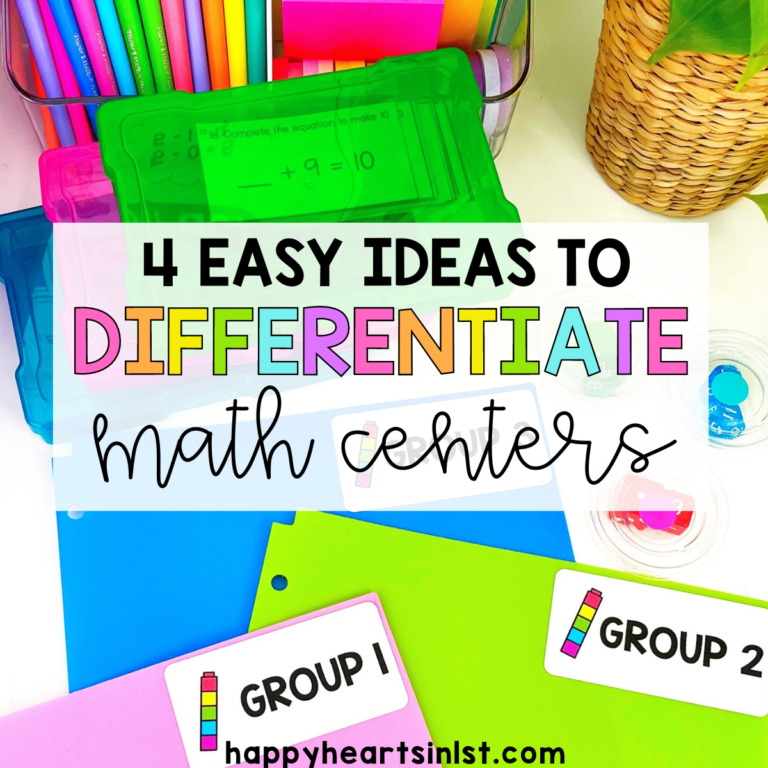


Where can I get those 2 Digit Addition forms above with Build and Add, Expanded Form Add, etc.? I homeschool my severely autistic, nonverbal son. Those would be very helpful to teach him. Thanks so much.